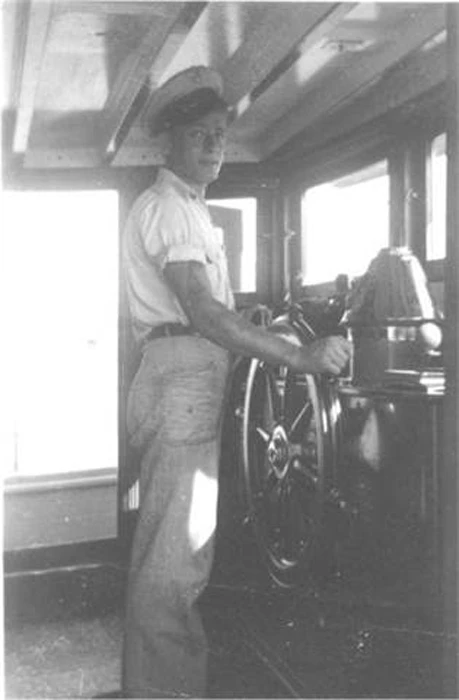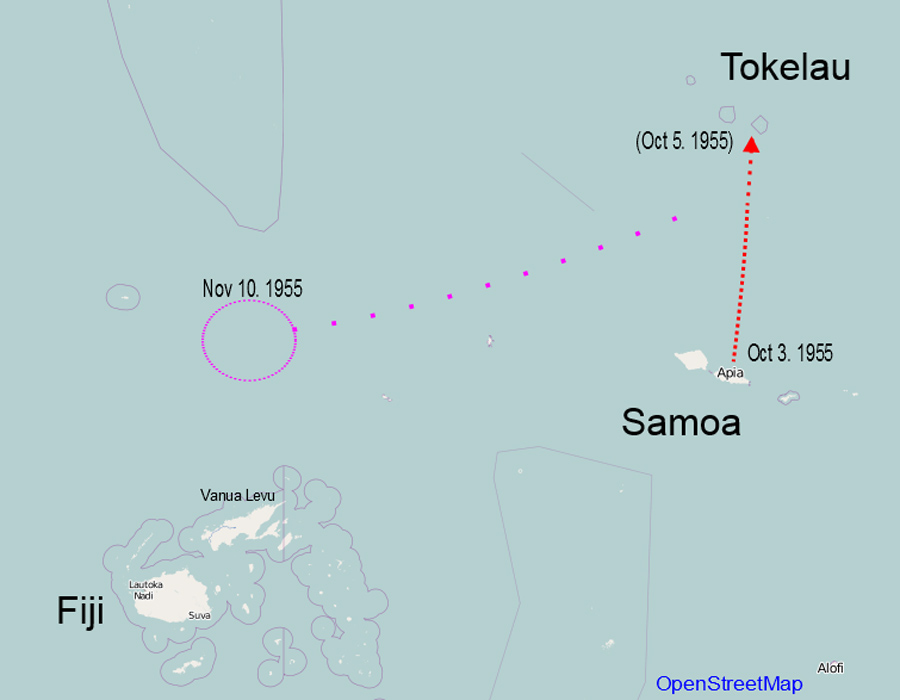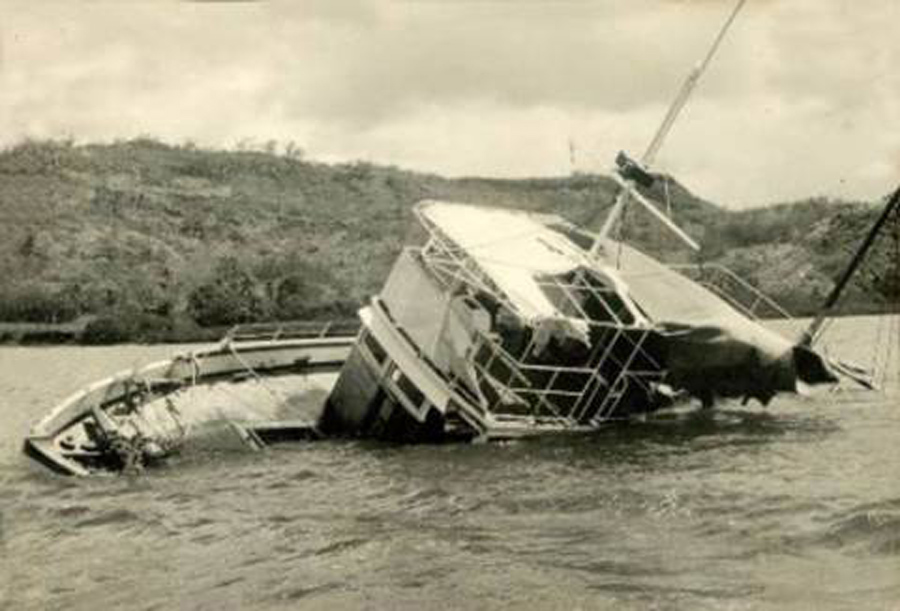For much of human history the sea has been a dangerous place, and there were many stories of strange sights and tall tales out beyond the sight of land. Over the horizon, the occupants of a ship are alone with the elements, and many returned with stories of what they had seen, out there.
Many ships have disappeared over the course of human history, some carrying fantastic treasures, some important and famous people. The seas are so vast and often so deep that they can swallow the greatest ships mankind could hope to produce, seemingly at a whim, leaving no trace.
And there have been stranger things reported than the disappearance of a ship. Whole flights of planes have vanished in the Bermuda triangle. Ghostly ships, centuries old, have been seen. And ships such as the Mary Celeste have been found, perfectly serviceable but inexplicably deserted.
One such of these phantom ships is the Merchant Vessel (MV) Joyita which disappeared along with its passengers in 1955. What happened to the ship, which by design was essentially unsinkable. And, more ominously, what happened to her crew?
The MV Joyita
MV Joyita was a 70 feet luxury yacht, built in Los Angeles in the United States and launched in 1931. Roland West, who was a famous Hollywood director in the 1920s and 1930s, was the first owner of the ship.
He named the ship after his wife Jewel Carmenille, calling the ship “Joyita” which means “little jewel” in Spanish. The ship spend much of the 1930s cruising the west coast of the United States, under both Roland West and its subsequent owner Milton Beacon.

Pressed into service as a Pacific patrol boat during the Second World War, Joyita patrolled the seas around Hawaii. Although she sustained minor damage after running aground, and had some of her components replaced with lower quality materials (chiefly iron piping) she remained largely intact and in good shape after the end of the war, and by the 1950s was being used as a fishing charter vessel.
Joyita was largely made of wood, with a hull of cedar planking. Unusually, she also had a cork lining to her holds which provided significant additional buoyancy. The combination of materials meant that the ship was fundamentally lighter than the water she sailed on, and almost nothing could happen to her which would cause her to sink.
The Final Voyage of the Joyita
On October 3 1955, MV Joyita left Apia in Samoa to sail to Tokelau Islands, a journey of about 270 miles (430 km). Only one of her two engines was running due to equipment failure at the last minute, but the journey was considered safe given its short distance and the favorable weather conditions.

Joyita was carrying medical supplies and wooden construction materials onboard, and had no dangerous cargo. She also carried 25 people, sixteen crew and nine passengers, and the journey was expected to last 48 hours
The ship was reported as overdue 3 days later, and no distress calls had been received. Flying boats from the New Zealand Air Force patrolled the area Joyita was thought to be in for almost a week, covering a huge area of open water. But they could find no sign of the Joyita.
A Ghost Ship
Finally, almost five weeks later on 10th November the merchant ship Tuvalu, travelling to the Funafuti atoll more than 600 miles (1,000 km) to the west, saw a ship drifting amidst the waves ahead of them. The ship did not respond to hails from the Tuvalu and the captain decided to investigate further.
Investigations showed that the ship was empty. The crew and passengers were missing and tons of cargo from the ship was lost. While the ship itself was perfectly fine and in no danger of sinking, there was some evidence that something had happened on board.
Parts of the bridge and accompanying rooms above the waterline had been damaged, and there was broken glass inside. Furthermore, bloody bandages were found on deck, along with a doctor’s medical bag.
The one working engine was found covered in mattresses but with sufficient fuel for it to operate, and the second engine was still partially disassembled and therefore non-functional. And all the clocks on board were found to have stopped at the same time: 10.25pm.
The communications radio was tuned to 2182 kHz, an internationally recognized distress frequency. However, the radio itself was found to not work and was not broadcasting, something which may not have been obvious to the crew. And all of the lifeboats and Joyita’s dinghy were missing.
The Investigation
Some of the story about what happened on the Joyita can be pieced together from what was found by the official maritime enquiry, but other aspects remain baffling to this day. For example, it is clear what had caused the initial problems on the ship.
- What Happened to The Zebrina? Ghost Ship of the Great War
- Taken by the Ice: What Became of the Franklin Expedition Crew?
A corroded pipe, one of those replaced during the Second World War, was found to be leaking and this allowed water to enter into the hull. It is very unlikely that the crew would have been able to find the source of the leak in open water.

The damage to the superstructure of the vessel seemed to be unconnected to the problems they were experiencing, but may have added to the sense that the vessel was heavily damaged. The attempts to send out a distress signal and the lack of response may have led to a rising panic amongst those on board.
The fact that whatever had happened, had occurred at night, also may have led to a lack of situational awareness, as the damage found was minor and would have clearly been recognized as such in the daytime. However, the decision to abandon Joyita, if that is what happened, makes absolutely no sense.
The three lifeboats were far less seaworthy than Joyita herself, and there were insufficient lifejackets for everyone on board. Furthermore the vessel itself was perfectly buoyant even five weeks later, and the captain would have been experienced enough to recognize this.
So, while it seems that those on board decided to leave the safety of Joyita in the night and test their luck in the tiny life rafts, why they did this is a total mystery. Could pirates have attacked the ship and taken the crew and some of the cargo? Could there have been a mutiny on board, without warning?
Both of these theories however carry their own problems. The crew were never seen again, and this means that 25 people were killed in cold blood. Furthermore, despite the damage there was no evidence of violence on Joyita apart from the bloody bandages, and these themselves suggest there was enough time for the doctor onboard to administer medical assistance.
No trace was ever found of the crew or the life rafts. And what caused them to abandon ship in the dark, only 50 miles short of their destination, remains a mystery from them until now. Those on board the Joyita simply disappeared.
Top Image: What happened to the crew of the unsinkable Joyita? Source: Christos / Adobe Stock.
By Bipin Dimri